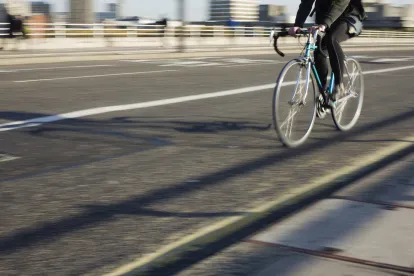With the wind on your face, cruising at a speed that feels like flying, few things feel better than riding a bike down your neighborhood street.
Bicycling often gives riders a sense of free-wheeling freedom, but it’s easy to forget that the risks are real. Between 2010 and 2020, the number of preventable deaths from bicycle transportation incidents increased by 44%. And of the 1,260 bicyclist deaths in 2020, 806 died in motor vehicle traffic crashes, compared to 454 in other non-traffic incidents. These rates typically peak during the summer.
The good news is that careful riding and an awareness of common accident risks can help you stay safe while biking. Here are a few of the most common causes of bike accidents and safety tips that can help prevent accidents.
Common causes of bicycle accidents
There are many outside factors that cause accidents. Being aware of them can help you take a proactive approach to avoid potential dangers on the road.
Distracted and reckless drivers
The leading cause of all vehicle collisions for cars and bikes alike is distracted driving on the part of an automobile driver, including texting, talking, or using social media.
When drivers pay attention to their phones instead of their surroundings, they are significantly more likely to cause dangerous collisions. According to a study by the University of Nebraska Medical Center, the number of cyclists killed by distracted drivers went up by 30% from 2005 to 2010.
Another factor that significantly increases the likelihood of an accident is alcohol involvement. Alcohol use, either by the motorist or the biker, was reported in 34% of all fatal cyclist crashes in 2019. Driving and riding under the influence is unsafe, and in most states, biking while drunk is unlawful.
As a cyclist, it’s critical to keep an eye on drivers, paying special attention to those who are driving erratically or distractedly to avoid accidents.
Dooring accidents and sideswipes
Getting “doored” is when a cyclist runs into a car door that is suddenly opened onto the bike path or into the bike lane. Bicyclists frequently have to ride closer to parked cars on congested streets with more traffic, making this type of accident common in urban areas. It’s the responsibility of drivers to make sure that they check and see that no bicycle or vehicle is coming before exiting their cars. A defensive approach to avoid the risk of this type of accident is for bikers to stay to the left of the bike lane.
However, doing so has the potential to land bikers in a similarly precarious position, as another common bike accident is getting sideswiped by passing cars. Bicyclists should always work to stay out of a driver’s blind spot and ride defensively.
Reckless bicyclists
When it comes to accidents involving a bike and a vehicle, it can be common to assume that the vehicle driver is at fault—but this isn’t always the case. Many bicycle accidents involve riders who:
-
Make unexpected swerves into the path of cars
-
Aren’t visible on roads
-
Don’t observe stop signs or red lights
-
Display aggressive cycling behavior
These riders not only put themselves in danger, but they also put fellow bikers and automobile drivers at risk. Cyclists and drivers alike must be aware, safe, and careful on the roads.
Weather
Sleet, ice, snow, or other bad weather is another major cause of bicycle accidents.
Many bicycle accidents occur during torrential downpours. Rain-soaked bikers are also significantly less visible and should use a lamp or reflective gear to draw attention to themselves. Additionally, rush hours often coincide with when the sun is best positioned to blind drivers with glare if they are driving into the sun.
It’s important to be cautious when riding in adverse conditions and to prepare yourself with proper gear and equipment that accounts for added risk due to weather conditions, such as a reflective rain cover for your helmet.
U.S. laws for bicyclists
There are differences in the cycling laws across the states, but there are a few general rules applicable wherever within the USA. Following these rules is crucial to avoiding fatal bike accidents:
-
Cyclists must ride on the right-hand side of the roadway—remember, “ride right”—never ride your bike against the traffic flow.
-
If a lane is wide enough to share with another vehicle, ride to the right of traffic. If the lane is not wide enough to share, cyclists are entitled to “take the lane” by riding in the middle.
-
The slowest vehicles on the road should be the furthest to the right. Where you position yourself on the road depends on the location of any parked cars, your speed, and your destination.
-
Always pass on the left.
-
At intersections, when there is a lane used for more than one direction, use the rightmost lane going in the direction you are traveling.
-
When there is a lane that is used for more than one direction, use the rightmost lane going in the direction you are traveling.
Remember, in most U.S. states and cities, bikers have to follow the same rules of the road as cars. They can even use hand signals to indicate turns. Cars, accordingly, are supposed to share the road with cyclists, and shouldn’t expect them to be on sidewalks.



 />i
/>i

